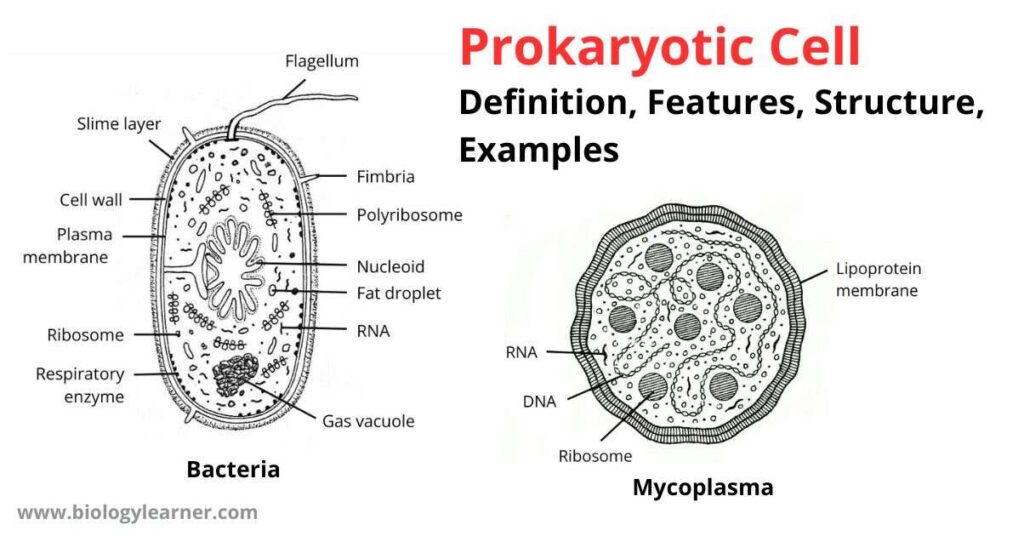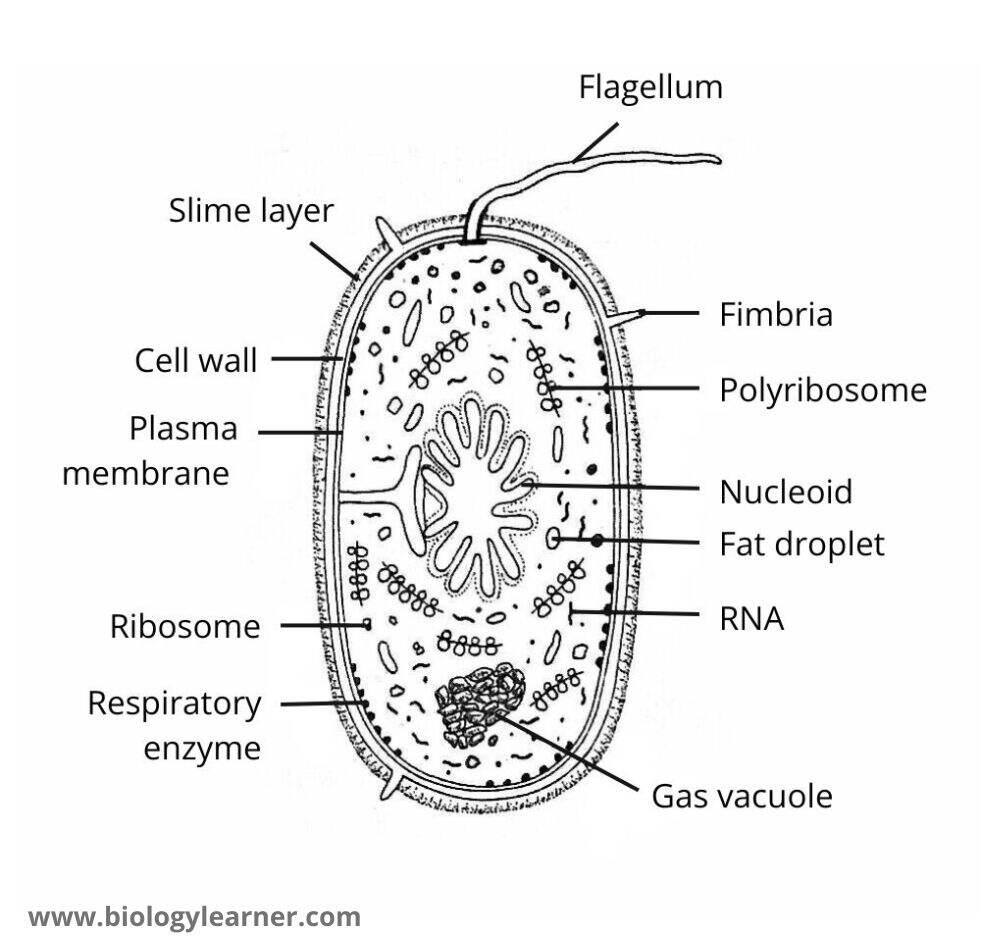In 1957 Dougherty has divided cells into two types based on the organization in the nucleus of the cell. One is a prokaryotic cell (primitive cell) and the other is a Eukaryotic cell (ideal cell). Prokaryotic cells are the most primitive type and have no organized nucleus (lacking nuclear membrane, nucleolus, and nuclear reticulum).
The name Prokaryotic is derived from the Greek words Pro and Karyon. “Pro = primitive and Karyon = nucleus“
Prokaryotic cells are very small in size (0.5-3 μ) and lack membrane-bound cell organelles such as mitochondria, plastids, Golgi bodies, etc. The organisms having prokaryotic cells are called prokaryotes.
Definition of Prokaryotic Cell
The cell having an unorganized nucleus, lacking membrane-bound cell organelles (mitochondria, plastids, Golgi bodies, etc), and chromosomes not formed during cell division is called Prokaryotic cell.

Features of Prokaryotic cell
- Prokaryotic cells are very small in size (0.1-0.3 μm).
- The cell is formed of peptidoglycan (like – Bacteria, Blue-green algae).
- Absence of membrane-bound cell organelles. Like – Mitochondria, Golgi bodies, endoplasmic reticulum, plastids, lysosomes, etc.
- In some cases single-membered photosynthetic lamellae are present.
- The ribosomes present in the cytoplasm of cells are of the 70s type.
- The centrosome is not present in the cytoplasm. So, the chromosome or mitotic apparatus is not formed.
- The well-organized nucleus is absent. Only double-stranded DNA is present instead of the nucleus.
- The central part of the cell containing DNA is known as the genophore or nucleoid.
- Absence of vacuole in the cytoplasm.
- Histone-like proteins are absent in the cell.
- Cytoplasmic circulation is lacking.
- Cell membrane sometimes invaginates into cytoplasm and forms mesosome.
- Flagella are present and formed of flagellin protein.
Examples
Some common Prokaryotes are Bacteria, Blue-green algae (cyanobacteria), Mycoplasma, or Pleuropneumonia like organisms (PPLO).

Structures of Prokaryotic Cell
The different parts of a prokaryotic cell visible on an electron microscope are as follows:
Capsule or Slime Layer
The prokaryotic cell, especially the bacterial cell, is surrounded by a thick coat on the outside part of the plasma membrane called the slime layer or capsule. The capsule protects the cell from external injury. The capsule-covered bacteria are contagious (Diplococcus pneumoniae causes pneumonia).
Cell Wall
It is situated just below the capsule or slime layer. The cell wall consists mainly of murein or peptidoglycan. The cell wall gives mechanical strength to the cell.
Plasma Membrane
Below the cell wall, a lipo-proteinous thin plasma membrane is present.
Mesosome
A special type of outgrowth mesosome formed by the coil of the cell membrane towards the protoplasm of the cell. The mesosome participates in the respiration of bacteria (Stevenson, 1970).

Cytoplasm
The jelly-like quasifluid that surrounds the plasma membrane is called the cytoplasm. The cytoplasm contains ribosomes, reserve food materials, lipids, and glycogen granules. Membrane-bound cell organelles and vacuoles are absent in the cytoplasm.
Ribosome
It consists of rRNA and ribosomal proteins. Ribosomes of prokaryotic cells are 70s type.
Lamellae or Thylakoid
It is a thin filamentous-like form, found in both blue-green algae and bacterial cells. Thylakoid contains various types of photosynthetic pigments like – chlorophyll-a, beta carotin, xanthophyll, c-phycoerythrin, and c-phycocyanin.
Reserve Food Substances
In bacterial cytoplasm, glycogen granules, lipoprotein, and volutene granules are present as reserve food materials. While glycoprotein granules, cyanophycean starch, and fat droplets are present as reserve food in blue-green algae.
Genetic Material
Double-stranded circular DNA in the cytoplasm constitutes the genetic material called nucleoid or genophore.
Flagella
In bacterial cells, flagella are arising from the surface of the cell wall. Flagella help in the process of locomotion.
Pili or Fimbriae
These are slender appendages on the plasma membrane of the bacterial cell. It is consists of pilin protein.


That is very attention-grabbing. You’re an overly professional blogger. Thank you